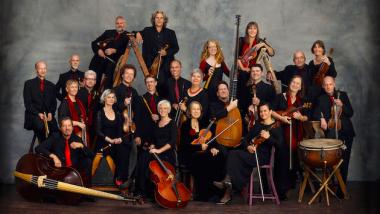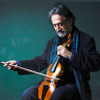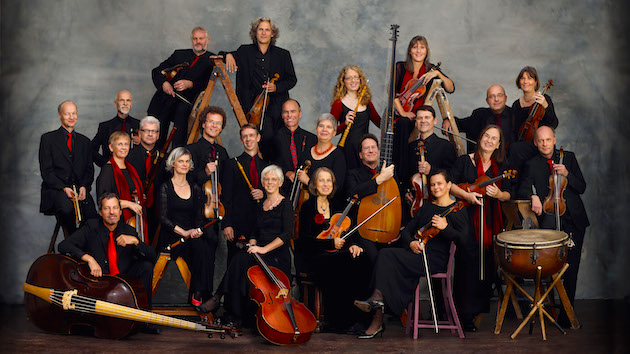
Sunday’s Cal Performances concert by the Akademie für Alte Musik (AKAMUS, or in English, the Academy for Ancient Music) was intriguingly titled “Secrets of the Baroque.” What secrets? I wondered, as I entered UC Berkeley’s Hertz Hall to hear the Berlin-based ensemble in the final concert of their U.S. tour.
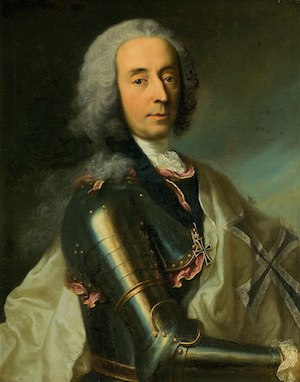
The most obvious secret was the inclusion of unfamiliar music. Take, for example, the Concerto Armonico by Unico Willem van Wassenaer, Lord of Twickel. If you haven’t heard of Wassenaer, it may be because his name was only recently attached to a set of six interesting concertos, which had been published anonymously in 1740; it was the 1980 discovery of a manuscript that clearly showed them to have been written by the count. Wassanaer’s music is worth bringing to the forefront — combining the sweetness of Pergolesi and the excitement of Handel (to each of whom the concertos had been ascribed at various points). Who would have thought a provincial Dutch nobleman and amateur musician would have written such fine work?
Or the opener: a dazzling, swirling overture by Francesco Maria Veracini, full of Italianate zest. And later in the afternoon, a Concerto Grosso by Alessandro Scarlatti, showing all the zest of Scarlatti’s operas and oratorios but without the length — it offered thoughtful counterpoint, contemplative introspection, and elegant dance music, all in a six-minute span.
Add to that (no secret to many, I’m sure, but new to me) Vivaldi’s extraordinary Violin Concerto, also in D-minor, from his Opus 4 collection titled La stravaganza (The eccentric). Unusually, it opens with the solo violin, unaccompanied and laying out a leaping theme that is subsequently interrupted, developed, extended, and heightened. A secret Vivaldi far removed from his sprightly but often unsubstantial entertainment-grade pieces!
The subtler secrets of the concert lay in the performance: how to sound so exciting, so profound, so exact and so improvisational? Of course, we know the answer: hard work, careful management, camaraderie, musicianship. But one can speculate about a few of the additional qualities that make for such a fine and satisfying ensemble.
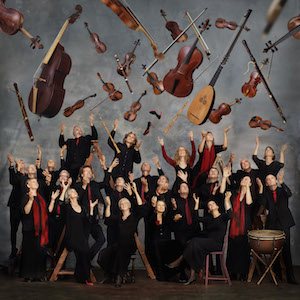
We might start with history: AKAMUS, founded in what was then East Berlin, is now almost 40 years old, a venerable age for an early music ensemble, and in this case, experience counts for a lot. While the personnel have changed (there were a number of younger players), accumulated knowledge has been passed down.
Their legacy is evident even in the way they stand on stage — and all do stand, even the bassoonist and cellist (with a very long end pin to hold up the instrument) — taking cues not only from the first violinist/leader but also comfortably looking at each other. All 15 of the instrumentalists were clearly enjoying the experience: Smiles flashed across the stage at a number of shared moments of musicianship.
The high level of individual skill was obvious from the start, in all sections: a supple and sensitive basso continuo (cello, bass, bassoon, harpsichord, and archlute); a nicely balanced group of excellent violinists and violists; and two fine oboists. The leader was violinist Georg Kallweit (soloist in the Vivaldi), and the first oboe was Xenia Löffler, whose performance as soloist in C.P.E. Bach’s B-flat Oboe Concerto was fluent and expressive, filled with the dynamic contrasts and quirky expressivity of the “Berlin Bach.”
Two big numbers, engaging the entire company, deserve mention as well: a sinfonia by Telemann, toe-tapping and full of variety, and Handel’s well-known D-minor Concerto Grosso.
The AKAMUS sound is the fundamental secret. The ensemble plays with the articulation and clarity of current Baroque performance practice, with “air” (tiny silences) between the notes to give zip to the rhythms. But also — supported by the good acoustics of Hertz Hall — the group has a silky legato that holds longer phrases together even as the individual nuances of rhythm are sharply demarcated. Not only were individual phrases beautifully shaped (I’ve never heard a group so uniformly and delicately round off the ends of phrases), but whole movements seemed to swell and subside organically. A big part of the ensemble’s success is their mastery of a larger dynamic range than one often finds in Baroque performance — all the way down to pianissimo when needed.
It was clear throughout that this particular touring ensemble knew their program intimately (no surprise, having taken it across the US for two weeks). The music seemed theatrical in the best sense: well-rehearsed, full of exciting things to say, and packing a punch with what is said. A common way to describe an ensemble that plays well together is to say they played “tightly,” but that does not do justice to AKAMUS’s ensemble playing, which was exact, accurate, precise, and yet also flexible and (like the best chamber-music) supportive of the sonorities of individual players and instruments.
I was delighted to have been let in on some of the secrets of the Baroque; and so apparently was the rest of the audience. AKAMUS responded to the audience’s standing ovation with a surprise encore, the short and fiery “Entrance of the Furies” from Jean-Baptiste Lully’s opera Phaëton, complete with mysterious swirling-wind sound effects, emanating, it turned out, from the cupped hands of the second oboist. Another secret revealed!

